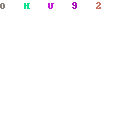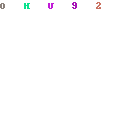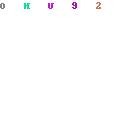Why Deleting ILivid from Add-Remove Doesn’t Resolve the Issue?
Most of the toolbars can be removed in Add-Remove Program like any other legit programs. However, it cannot be applied to Ilivid toolbar as it has changed the search provider settings. Plus, with some software bundled, the uninstaller does not work properly at all. Therefore, manual approach is needed to change your search provider to the one you had before getting infected by this annoying application. After that you need to replace search providers to ensure a complete removal.Characteristics of ILivid
ILivid is, in effect, a browser toolbar that can be installed to most of the browsers. It gets inside through various sharing websites or it can come bundled with other software. Once it lands on your machine, you’ll certainly get redirected to iLivid.com or other unsuspected web sites every time you input the url and press Enter key. Just like any other browser hijackers, it modifies your browser settings, expands your bookmark list with various unknown websites and set your default homepage as iLivid.com without your consent.
Please do not consider it as a tiny issue since it is able to cause more severe problems. Please be noted that tech-savvy hackers are not that bored to create hijackers for fun, they dedicate to collecting information about your online visit activities and sending it to plenty of marketing companies or to hackers who try to get some profit by collected passwords, data of bank accounts, etc. Reading so far, you must want to eradicate it as soon as possible, yet the intricate situation may drive you mad, please don’t be stampede into making any changes to your files and registries, follow the steps below or simply ask professional help from Tee Support experts 24/7 online here.
How dangerous ILivid is
- Shows commercial adverts.
- Stays resident in background.
- Cause the infected computer work slow.
- Integrated with lots of spyware and adware parasites.
- Changes browser settings and hijacks Google and other search results.
- Changes homepage of web browser and prevents user from modifying it.
- Connects itself to the internet and?allows the criminals to extort your personal information.
Detailed Instruction for Radical ILivid Removal

2. Search for ILivid in the list. Select the program and click Remove button.
3. Remove ILivid browser add-ons Internet Explorer:
a) Open Internet Explorer. Go to Tools → Manage Add-ons.
b) Remove all ILivid components
4. Go to the Registry Editor to delete all related entries listed below
a) Click “Start” menu, hit “Run”, then type “regedit” click “OK”.


b) Delete associated ILivid files and registry values:
Files:
c:\Documents and Settings\[user]\Desktop\iLivid.lnk c:\Documents and Settings\[user]\StartMenu\Programs\iLivid\iLivid Download Manager (Debug).lnk c:\Documents and Settings\[user]\StartMenu\Programs\iLivid\iLivid Download Manager.lnk c:\Program Files\iLivid\DownloadManager\ilivid.exe c:\Program Files\iLivid\DownloadManager\ilivid.ico c:\Program Files\iLivid\DownloadManager\libeay32.dll c:\Program Files\iLivid\DownloadManager\libgcc_s_dw2-1.dll c:\Program Files\iLivid\DownloadManager\mingwm10.dll c:\Program Files\iLivid\DownloadManager\phonon4.dll c:\Program Files\iLivid\DownloadManager\QtCore4.dll c:\Program Files\iLivid\DownloadManager\QtGui4.dll c:\Program Files\iLivid\DownloadManager\QtNetwork4.dll c:\Program Files\iLivid\DownloadManager\QtScript4.dll c:\Program Files\iLivid\DownloadManager\QtSvg4.dll c:\Program Files\iLivid\DownloadManager\QtWebKit4.dll c:\Program Files\iLivid\DownloadManager\QtXmlPatterns4.dll c:\Program Files\iLivid\DownloadManager\script.qscript c:\Program Files\iLivid\DownloadManager\ssleay32.dll c:\Program Files\iLivid\DownloadManager\Uninstall.exe c:\Program Files\iLivid\DownloadManager\vlc c:\Program Files\iLivid\DownloadManager\imageformats\qgif4.dll c:\Program Files\iLivid\DownloadManager\imageformats\qjpeg4.dll
Registry values:
HKCU\Software\Microsoft\Windows\CurrentVersion\Internet
Settings\random
HKCU\Software\Microsoft\Windows\CurrentVersion\Run\random
Tips for Future Virus Prevention
- Use a firewall to block all incoming connections from the Internet to services that should not be publicly available. By default, you should deny all incoming connections and only allow services you explicitly want to offer to the outside world.
- Enforce a password policy. Complex passwords make it difficult to crack password files on compromised computers. This helps to prevent or limit damage when a computer is compromised.
- Ensure that programs and users of the computer use the lowest level of privileges necessary to complete a task. When prompted for a root or UAC password, ensure that the program asking for administration-level access is a legitimate application.
- Disable AutoPlay to prevent the automatic launching of executable files on network and removable drives, and disconnect the drives when not required. If write access is not required, enable read-only mode if the option is available.
- Turn off file sharing if not needed. If file sharing is required, use ACLs and password protection to limit access. Disable anonymous access to shared folders. Grant access only to user accounts with strong passwords to folders that must be shared.
- Turn off and remove unnecessary services. By default, many operating systems install auxiliary services that are not critical. These services are avenues of attack. If they are removed, threats have less avenues of attack.
- If a threat exploits one or more network services, disable, or block access to, those services until a patch is applied.
- Always keep your patch levels up-to-date, especially on computers that host public services and are accessible through the firewall, such as HTTP, FTP, mail, and DNS services.
- Configure your email server to block or remove email that contains file attachments that are commonly used to spread threats, such as .vbs, .bat, .exe, .pif and .scr files.
- Isolate compromised computers quickly to prevent threats from spreading further. Perform a forensic analysis and restore the computers using trusted media.
Video Gide on How to Remove ILivid
Note: nowadays, Antivirus Programs are fallacious as they are not capable of keeping abreast of viruses’ evolution or mutation.If you can't proceed the steps, please feel free to contact Tee Support experts 24/7 available for real-time tech support.

No comments:
Post a Comment